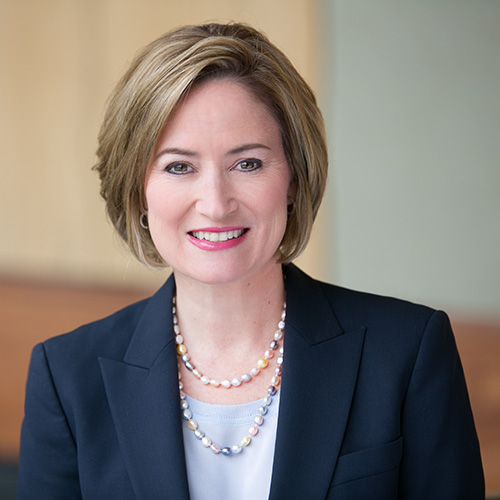What It Takes to Build an Ophthalmic Franchise
CHICAGO—Some of the world’s largest ophthalmic companies were represented here during OIS@AAO to discuss what it takes to build a successful ophthalmic franchise. Panel moderator Emmett T. Cunningham, Jr., MD, PhD, MPH, hosted panellists Robert Dempsey (Shire), Jim Mazzo (Carl Zeiss Meditec), Ashley McEvoy (Johnson & Johnson), Jerry St. Peter (Sun Pharmaceutical Industries), and Calvin Roberts, MD (Bausch + Lomb/Valeant), all of whom reiterated their company’s passion and commitment to the sector.
Sun Pharma is the world’s fifth largest global specialty generic pharmaceutical firm, and the move into branded ophthalmics is no surprise, given the company’s number 1 position in prescription volume in India.
“We’re number 2 in revenue in India for branded ophthalmics. The foundation of Sun going global is starting in the US,” St. Peter said.
Shire just started its ophthalmic franchise and has launched its first ophthalmic product, dry eye drop lifitegrast, Dempsey said, adding the company’s programs will continue to ensure its “solid positioning” in the specialty pharmaceutical and rare disease spaces.
Valeant is a $10 billion per year company, Dr. Roberts noted, and Bausch + Lomb comprises about 40% of that.
“Bausch + Lomb is the only fully integrated ophthalmic company,” he said, with surgical, pharmaceutical, vision care, and consumer divisions.
J&J has a long history in eye care through its contact lens division, McEvoy said. With the recent acquisition of AMO from Abbott Labs, J&J “is coming home again, and really rejoining the ophthalmology community.”
AMO was an ideal fit for J&J, and “we think the marriage with some of the J&J assets and AMO can serve some patients in new, remarkable fashions. They’re the number 2 surgical leader in the world, and [the company] has very strong refractive and cataract franchises,” she said.
Zeiss is “the best kept secret in ophthalmology,” Mazzo said. “Our whole philosophy is that the company has diagnostic-to-treatment therapy. We diagnose and we can treat, and it’s rare in our industry to be able to do both.”
Where – and how to expand
Expanding into the US market was not a decision Sun made lightly, St. Peter said.
“There’s not a greater market to be involved in than the US with the value you’re able to generate. The innovation is there. The opportunity is there,” he said. Through Sun Pharmaceutical Advance Research Center (SPARC), Sun is also looking globally for innovative ideas to bring to market.
Dempsey said Shire’s global vision includes raising awareness of the company within the ophthalmic community and building out teams in Canada, Europe, and Asia-Pacific.
“We’ve got programs for infectious conjunctivitis and glaucoma,” Dempsey stated. “We’re well-positioned to take advantage of global markets.”
For its first 160 years, B+L “was a very US-focused company,” Dr. Roberts said, until the Valeant acquisition created a decentralized model where each region does business the way it sees fit based on regulatory requirements.
“The CE mark has a different regulatory path than FDA clearance,” he explained, meaning B+L has multifocal, trifocal, and blue-blocking intraocular lenses (IOLs) on the market in Europe that are not available in the US. B+L internally innovates in its contact lens and surgical devices divisions, but looks externally to in-license pharmaceutical products.
Both Sun and Shire will also have a similar hybrid mix for expansion.
J&J’s philosophy sounds simple – “Never lose your way, stay focused on patient needs and customer needs,” McEvoy said. The company’s biggest concern is not to become such a goliath it cannot react to change or recognize innovation.
Mazzo said, “The minute you start to think of US and ex-US, you start to lose the leverage across the markets. It’s what I stress to Zeiss – we’re not a Germany company. We are a global company that happens to have a headquarters in Germany.” Under his reign, Mazzo wants his team to think beyond “first market” mentality and concentrate on the subsequent market launches equally.
Finally, Mazzo said, “Innovation at that small company is really something I’d love to bring into a large company like Zeiss. That kind of entrepreneurial spirit.” Zeiss is actively evaluating the presbyopia, retina, glaucoma, and dry eye markets where there are “substantial unmet needs in devices.”
Contributed By Michelle Dalton, ELS
Panelists:

Emmett T. Cunningham Jr., MD, PhD, MPH
Prior to joining Clarus, Dr. Cunningham was the Senior Vice President, Medical Strategy at Eyetech Pharmaceuticals, Inc. (NASDAQ:EYET), where he helped build and lead the team that developed and commercialized Macugen, a first-in-class product for the treatment of age-related macular degeneration.

Robert Dempsey
Robert Dempsey is the Head of the Ophthalmics franchise for Shire. He was instrumental in building and launching the Ophthalmics franchise into the Eye Care space and has extensive leadership experience in sales, marketing, medical affairs and business development.
Jerry St. Peter
Jerry St. Peter is Vice President and Head for Sun Ophthalmics, a newly formed Division of Sun Pharmaceutical Industries, Inc. In this role, Mr. St. Peter is responsible for creating the U.S strategy and building a new Ophthalmic Business Unit, focused on specialty pharmaceuticals.

Ashley McEvoy
Ashley McEvoy is Company Group Chairman for Johnson & Johnson Vision Care and Diabetes Care Companies, two medically directed, consumer-informed businesses within the company’s global medical device segment.

Calvin Roberts, MD
A specialist in cataract and refractive surgery, Dr. Roberts holds patents on the wide-field specular microscope, used for corneal endothelial studies, and has done extensive research on ophthalmic non-steroidals and post-operative cystoid macular edema.
Jim Mazzo
James V. Mazzo is Global President for Carl Zeiss Meditec’s Strategic Business Unit Ophthalmic Devices, which includes Ophthalmic Diagnostics, Surgical Ophthalmology and Refractive Lasers. He also heads the company’s U.S. Sales and Service Center.
